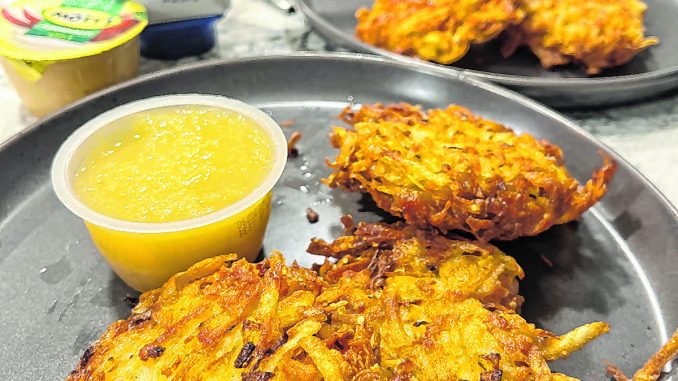
Potato latkes, a beloved dish in Jewish cuisine, have a rich history and cultural significance that spans centuries. The origins of latkes can be traced back to Eastern Europe, where potatoes became a staple in the 18th century. The dish gained prominence among Jewish communities, particularly during Hanukkah, the Festival of Lights.
The connection between latkes and Hanukkah is rooted in the story of the miracle of the oil. According to tradition, during the rededication of the Second Temple in Jerusalem, a small amount of oil miraculously lasted for eight days. To commemorate this event, foods fried in oil, like latkes, are consumed during the festival.
Over time, latkes evolved to include grated potatoes, onions, eggs, and flour, creating a delicious fried pancake. As Jewish communities migrated, so did the tradition of enjoying latkes, and the dish became a symbol of cultural identity.
Latkes are not only a cherished Hanukkah dish but have also gained popularity worldwide. Beyond their cultural significance, they serve as a symbol of resilience and celebration. Whether enjoyed with applesauce or sour cream, potato latkes continue to bring people together, transcending cultural and religious boundaries, and leaving a crispy, flavorful imprint on the culinary landscape.
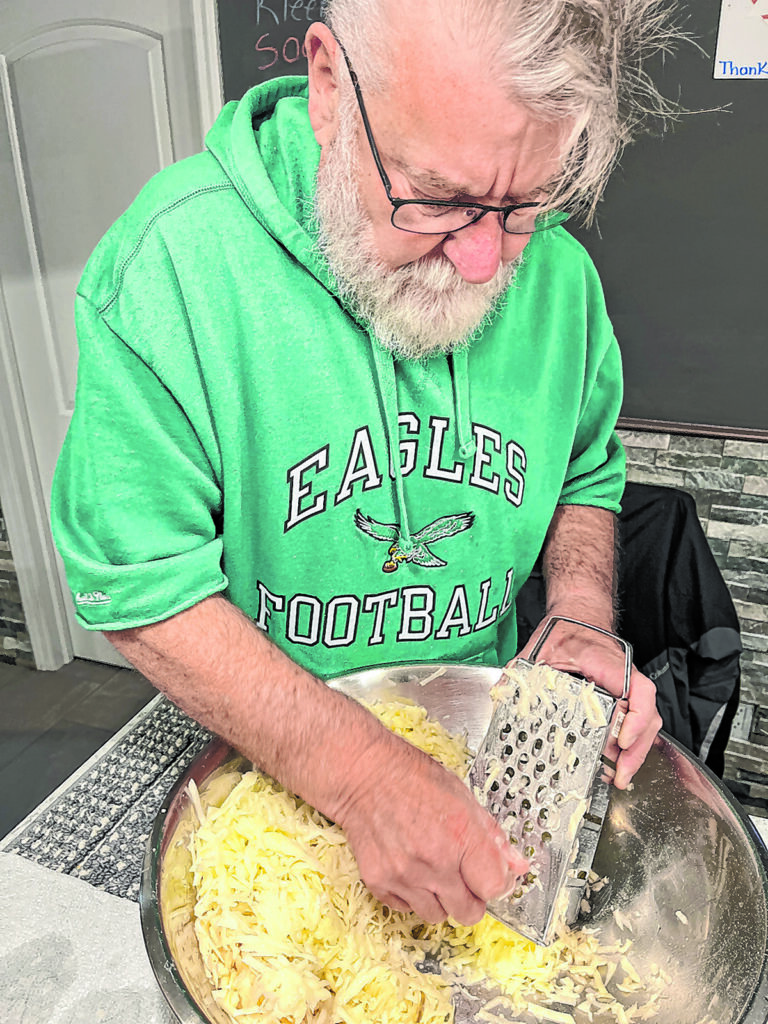
Paul Marcy, originally from Great Neck, shared his personal recipe for latkes, which are highly sought after by friends and family during the holidays.
“My mom’s cousin Bruno’s wife, who we called Aunt Theresa, made them the best; I learned from watching her make them,” Marcy said. Bruno and his wife lived in Bayside.
“My dad’s mom, Catherine, made them really well too,” Marcy said. “She lived in Washington Heights; that’s where all of the first-generation Germans lived decades ago.”
Marcy said that some people only make and eat latkes for Hanukkah.
“I say, ‘If you love latkes, make them and eat them whenever you want,’” Marcy added.
Ingredients
5 lbs russet potatoes
6 Tbsp matzoh meal
2 medium yellow onions, chopped fine
3 eggs
3 tsp salt
1/2 tsp pepper
1 cup canola oil
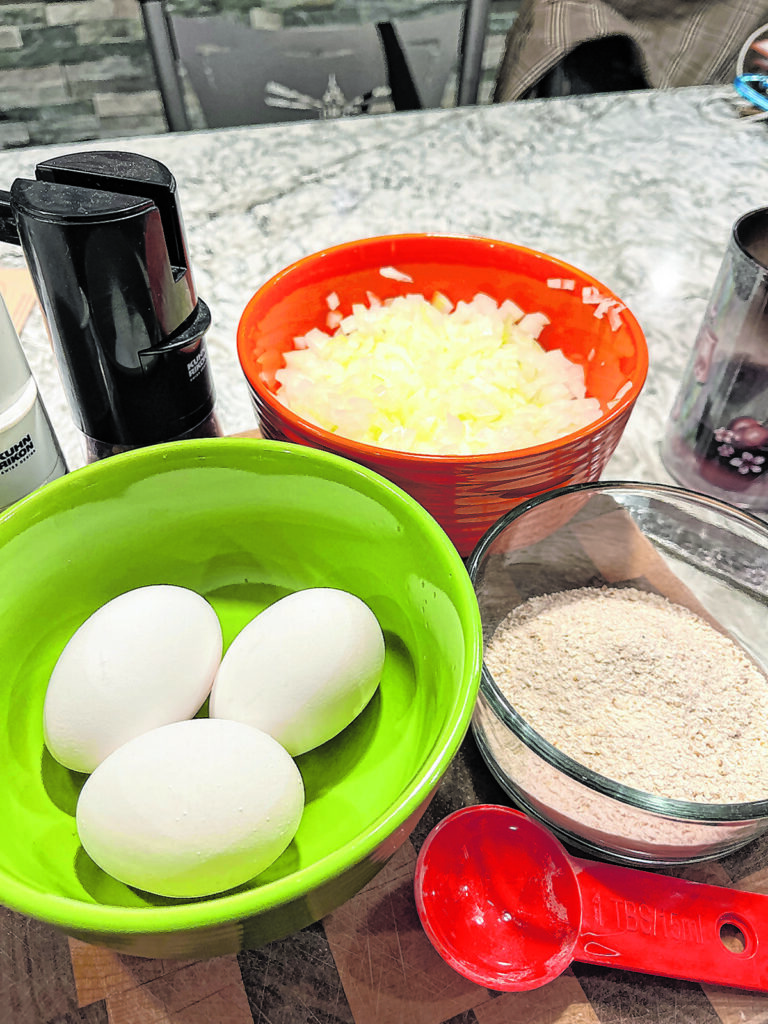
Directions
- The potatoes can be peeled or not. If you do not peel the potatoes, scrub them well.
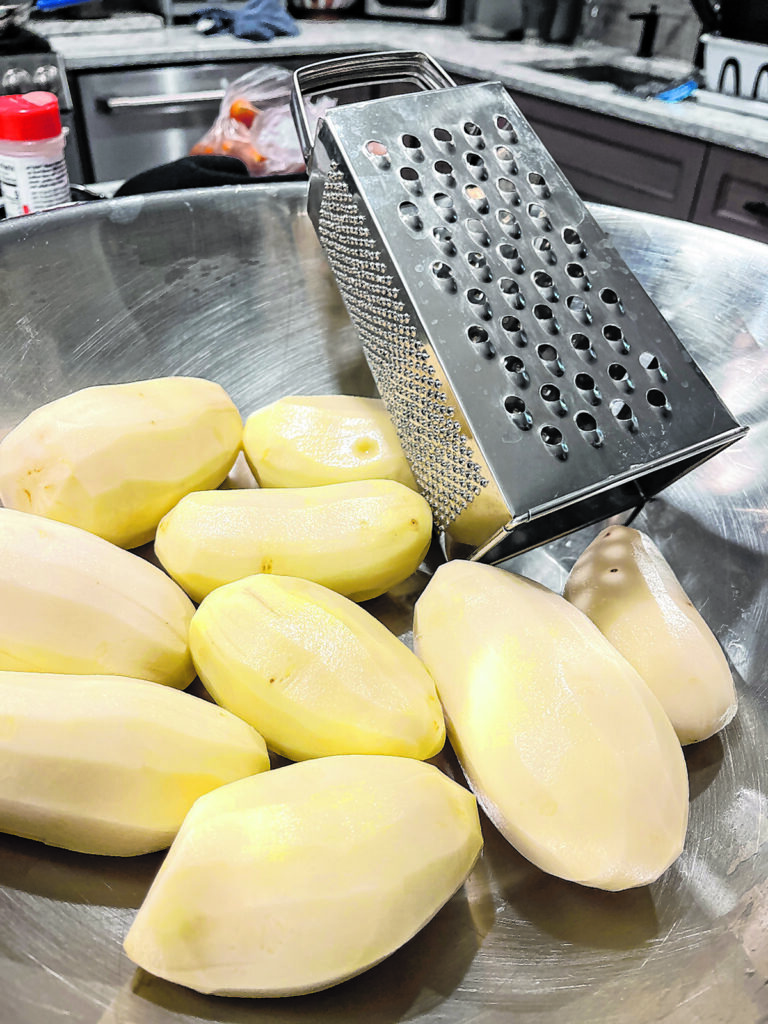
peeled potatoes (Christy Hinko) - Grate the potatoes on a box grater into a large mixing bowl. Longer strokes on the shredded potatoes are preferred to help keep the latkes formed through the process.
- Do not shred the potatoes until you are ready to mix and begin cooking.
- Potatoes oxidize and turn brown quickly after grating them. Work quickly.
- Pour the grated potatoes onto a clean tea towel. Fold towel edges over to form a pouch, containing the shredded potatoes.
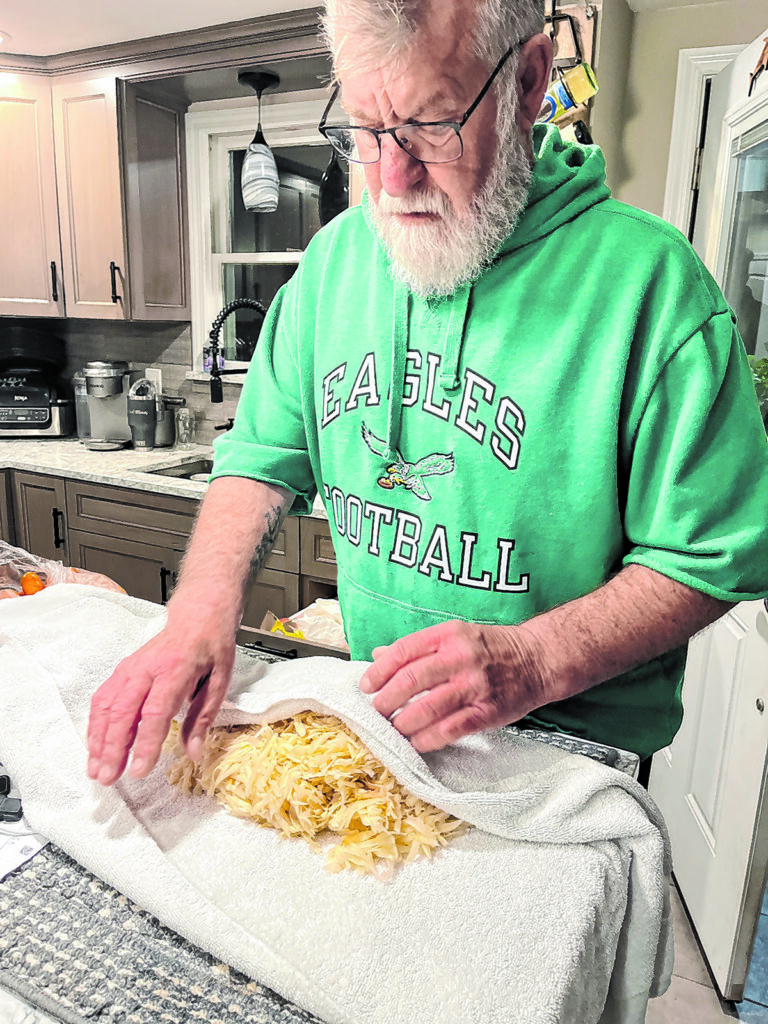
Paul Marcy prepares shredded potatoes (Christy Hinko) - Over a bowl, wring towel with shredded potatoes wrapped inside. Save the squeezed water to make gravy with later, if desired, otherwise, discard water. Squeeze all excess moisture out of shredded potatoes.
- Return shredded potatoes to a large mixing bowl.
- Add chopped onions to shredded potatoes.
- In a small bowl, lightly beat three eggs and add them to the potato mixture.
- Add salt and pepper to mixture.
- In a large skillet, add canola oil. A well-seasoned cast iron pan is best, but not necessary. Turn stove burner to medium high to high heat to preheat oil.
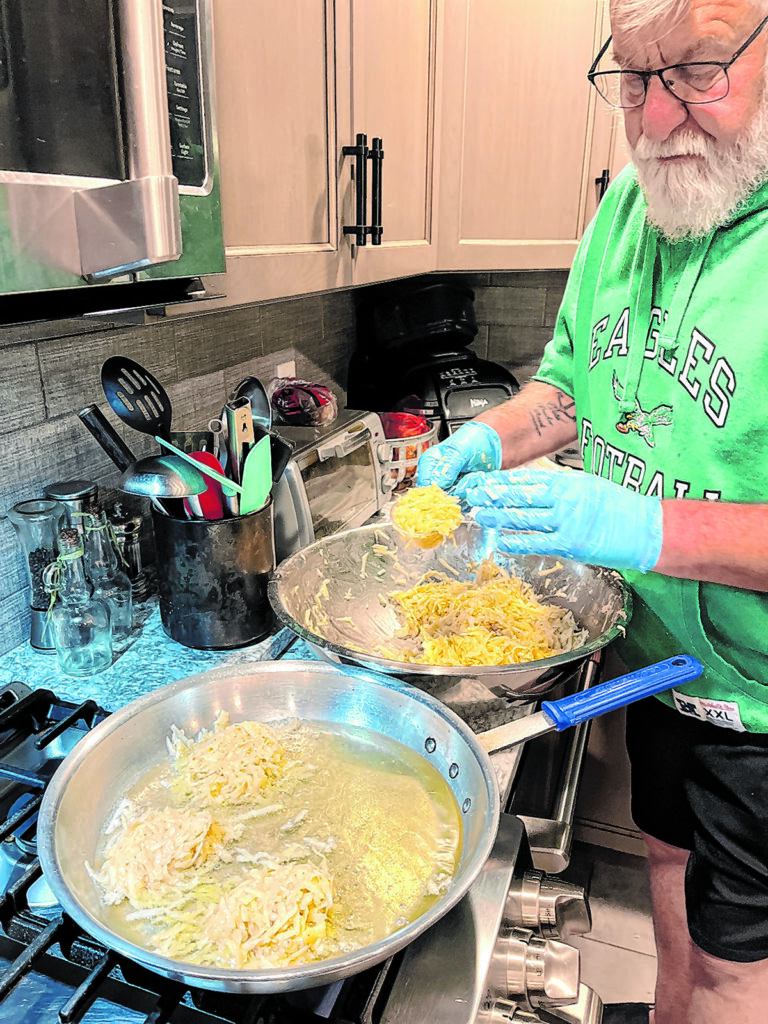
Into the frying pan, Paul Marcy drops latke batter into the oil. (Christy Hinko) - Begin hand mixing potato mixture in large mixing bowl. Mixture should be evenly moist. If mixture appears to be too dry, add another lightly beaten egg. If the mixture is too moist, work in another tablespoon or two of matzoh meal until the desired consistency is achieved.
- Measure 1/2 cup potato mixture with a measuring cup. This makes a meal-sized latke. Measure smaller portions of potato mixture for smaller-sized latkes.
- Place measured potato mixture into hot oil. Leave a small space between each latke for even cooking. Press latke slightly to form a flatter pancake shape.
- With a fork, move thinner, loose potato shreds onto top of latke, for even cooking.
- Cook until golden brown on first side, approximately six minutes.
- Flip latke with a spatula or fork carefully, as to not splash oil.

Frying the spuds (Christy Hinko) - Lightly move latkes throughout cooking to make sure they are not sticking to pan.
- Continue frying latkes until both sides are golden brown, approximately four more minutes or to desired doneness.
- Move cooked latkes to plate lined with several layers of paper towel to absorb excess oil. Lightly salt plated latkes to taste.
Serve immediately, piping hot straight from the pan. Fresh is best, but these do freeze well. Latkes are great served with applesauce, sour cream or just plain by themselves. Fork-clean oil in pan, removing fried potato pieces before starting next batch. Makes 20.
Post Views: 7

